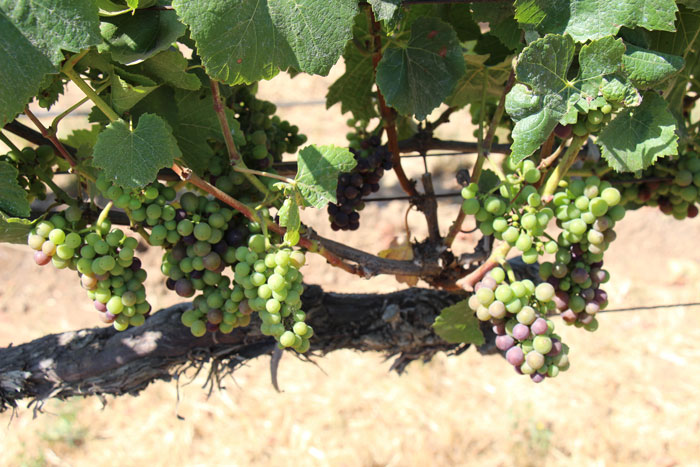
Based on what he was seeing and other growers in California’s Lodi district were telling him, wine grape industry veteran Mark Chandler, Chardonnay was in full bloom by mid-April.
Located directly east of San Francisco at the edge of the Sacramento River Delta, this area is noted for its Mediterranean climate and production of such premium wine grape varieties as Cabernet Sauvignon, Zinfandel, Chardonnay, Merlot and Sauvignon Blanc.
“We’re still a bit nervous about the potential for frost damage,” he says. “We’ve been hit several times by cold temperatures this season, but nothing serious.”
That included early this month when temperatures dropped to the low 30s. Since then, overnight lows have tended to remain above the 40-degree mark.
Chandler recalls the last time Lodi growers suffered significant damage from a late-spring freeze. That was in 2008, on April 24. “The vines really got singed then,” Chandler says. “Growers also talk of a major frost event years ago in May. So, we’re not out of the words yet with regards to the frost threat.”
He, his wife, Jan, and brother-in-law David Burlington grow 180 acres of Cabernet Sauvignon, Chardonnay, Malbec and Zinfandel in their Mokelumne River Partners vineyards in the central Lodi AVA. Chandler’s three decades of experience growing wine grapes and marketing wine include 20 years as executive director of the Lodi Winegrape Commission. His consulting firm, Chandler & Company, markets and promotes wine and wine regions for a variety of clients.
This year the vine development is advancing about two to three weeks ahead of usual, Chandler notes. For example, bud break in the region usually begins in mid-March. This year the earliest buds began opening in late February.
Shoot thinning also began early this year and was well underway in Chardonnay by mid-April. Once finished with the early varieties, crews will be moving directly into the red varieties, he says.
Taking advantage of showers earlier in the month, temperatures reaching close to 90 degrees and wet ground that has hindered treatment, powdery mildew pressure also began building unusually early in the vineyards this year. By the third week of April, many growers had already made three sulfur applications to control the fungal disease.
“People are really busy in the fields,” Chandler says. “The crop is coming on fast, and all the field work has to be done at once.”
About a fifth of vineyards in this appellation, including his, are certified green under the Lodi Rules for Sustainable Winegrowing.
Despite the drought, most Lodi growers seem to be in good shape for water this year, Chandler reports. About a fourth of them irrigate with surface water. The rest rely on wells for their water.
“There’s always a concern about possible curtailment of water deliveries, but supplies of surface water seem to be ok,” he says. “We’re keeping our fingers crossed.
“Growers here are very conservative in how they use water. The wide-spread use of drip irrigation in the district has greatly reduced the amount of water they need to grow a crop. And, they are very stingy with their water in terms of timing their irrigations and of application rates. They use just enough to grow the vines and no more.”
As Chandler sees it, a change in the structure of California’s wine market offers opportunities for some growers.
Consumer demand for wines selling for more than $10 a bottle is increasing at the expense of lower-priced wines. Much of the market for the less-than-$10 bottles, in turn, is being supplied by imported bulk and bottled wines.
“To the extent that growers can manage the water, the vines and the canopies to produce the quality of grapes that will attract wineries that make the higher-priced wines, this can work to their advantage,” he says. “This could work well for Lodi growers, where conditions favor the production of better quality grapes.”
About the Author(s)
You May Also Like




